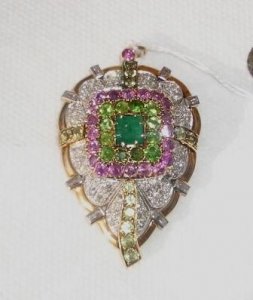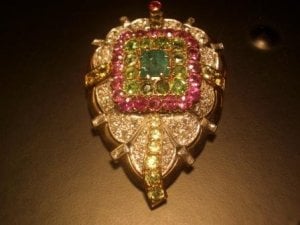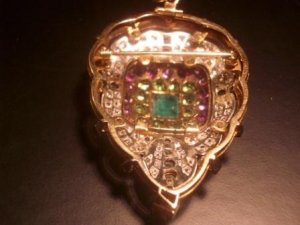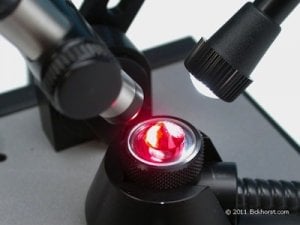Someone (very helpfully) suggested that I post this broach in the colored stones section. So, here it is.
A gemologist identified the center stone as an emerald (thinks Russian). The green stones surrounding the emerald are Dematoids (identified by horsetail inclusions). The pink stones surrounding the Dematoids are pink sapphires. The white stones are diamonds. What gemologist can't identify are the yellowish/greenish/pale stones down the middle and to the sides.
Any ideas?



A gemologist identified the center stone as an emerald (thinks Russian). The green stones surrounding the emerald are Dematoids (identified by horsetail inclusions). The pink stones surrounding the Dematoids are pink sapphires. The white stones are diamonds. What gemologist can't identify are the yellowish/greenish/pale stones down the middle and to the sides.
Any ideas?








300x240.png)